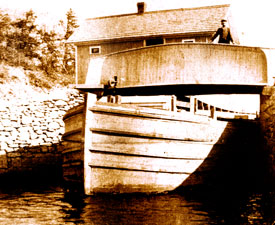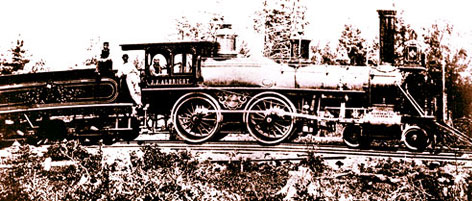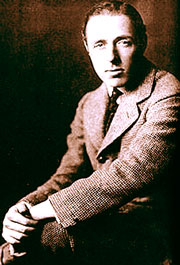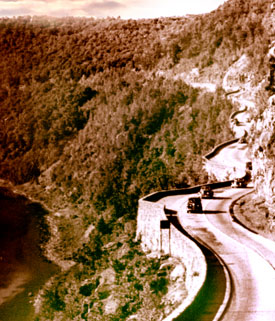
History continued ...
The construction of the D & H Canal (1828-1898) dramatically changed the Town of Deerpark. Primarily, it was constructed to provide much needed Pennsylvania anthracite coal to New York City. Other goods, such as bluestone, cement and lumber, were shipped as well. The route of the canal through Deepark was determined by the relative ease of construction through this valley. New industries were created and old ones expanded. Quarries, tanneries, lumber mills, boat yards, supply stores, blacksmith shops, carpenter shops were busy places along the canal. Homes were built making schools, churches and public buildings necessary. Many of these buildings remain throughout the town.

The town’s make up changed once again with the advent of the railroad.
In
1868, the Monticello & Port Jervis
Railroad Company started to bring people here for vacations and to enjoy the natural beauty of the rivers and mountains. A thriving resort industry arose.
The railroad also was instrumental in making commercial dairying in the Neversink Valley a viable occupation. Each farm within a convenient distance of a railroad had a “milk stop” to pick up cans of milk to ship to New York City. Since the middle of the 20th century, farming has no longer been profitable.


